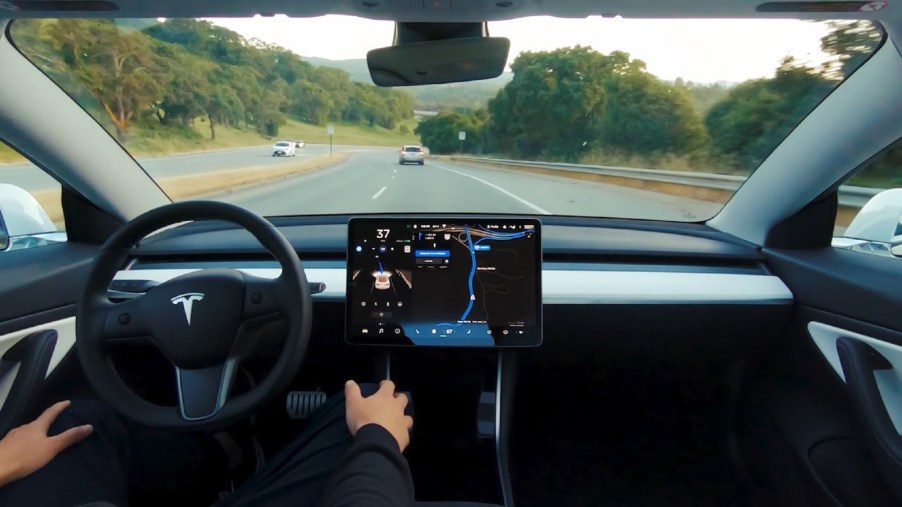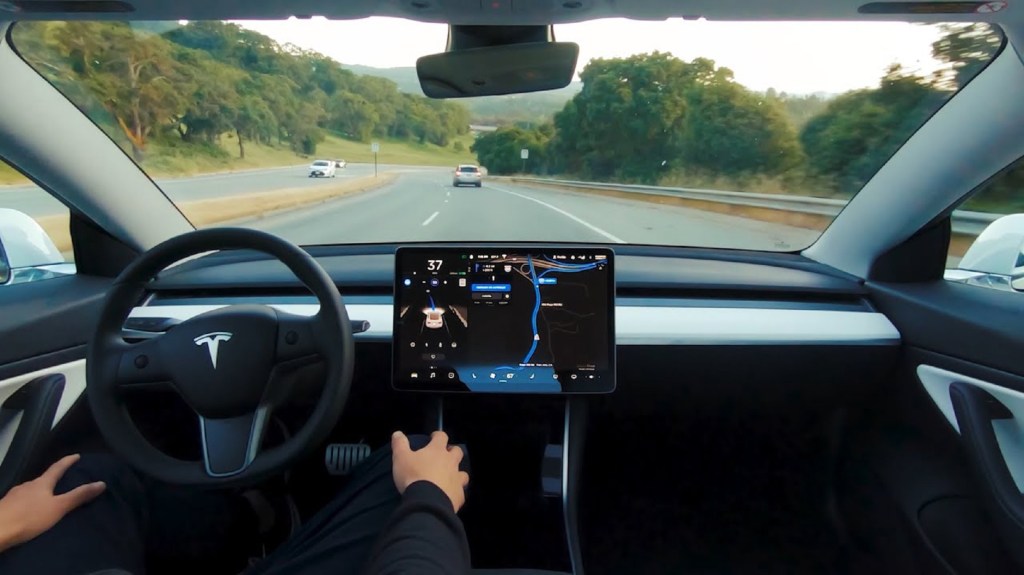
No, Tesla Does Not Have Full Self-Driving Capability Yet
Speed isn’t the only thing that many find appealing about Tesla’s EVs. For several years, the brand has promised that its cars would be able to drive themselves. And now, with a new update, Tesla claims that it has full self-driving capabilities. But that’s not actually the case.
Tesla’s ‘Full Self-Driving’ feature is in beta release

As Tesla’s CEO Elon Musk recently announced on Twitter, the company is rolling out what it calls ‘Full Self-Driving,’ Autoweek reports. Not every Tesla owner will receive the feature, though, Roadshow reports. At least, not initially.
Tesla refers to this ‘Full Self-Driving’ update as a beta release, limited to a small handful of specially-selected individuals. The intent here is to test the software in real-world situations, and subsequently refine it, Automotive News reports. Musk claims that the feature could see a “wide release” by the end of 2020, Car and Driver reports. Naturally, for your Tesla to theoretically install the ‘Full Self-Driving’ feature, it will need the requisite optional cameras and radar.
Based on footage posted on social media, it appears the feature is an expansion of the existing Autopilot suite, InsideEVs reports. And Musk claims that implementing it requires significantly rewriting the existing software, InsideEVs reports.
Releasing this feature into the wild, so to speak, is being “closely watched” by the NHTSA, Reuters reports. However, another organization already previewed Tesla’s ‘Full Self-Driving’ feature: Consumer Reports. And it, as well as the NHTSA, find the name misleading.
Despite the name, Tesla’s new feature does not make its cars self-driving
According to Consumer Reports, the Tesla ‘Full Self-Driving’ update does add useful features. It comes with parking assistance, stop-sign and traffic-light recognition, and improved highway lane changing. However, by no means does it make your Model 3 or Model X a self-driving vehicle.
Even the description Tesla includes with the feature acknowledges this, Jalopnik reports. In the above image, Tesla requires that you “always keep your hands on the wheel and pay extra attention to the road.”
By definition, if you have to keep your hands on the wheel and pay attention while your car’s in motion, it isn’t a self-driving car. Autopilot, just like GM’s Super Cruise or any other advanced driver-assistance system suite, makes your car partially-autonomous. In other words, this is not a Level 5 system, but Level 2 at best.
This is something that the NHTSA, in its recent statement regarding the Tesla ‘Full Self-Driving’ release, also touched upon. And no ADAS feature, not backup cameras, nor blind-spot monitoring or automatic emergency braking, is a replacement for a human driver. That’s something else the NHTSA has called Tesla out for on numerous occasions, Consumer Reports points out. Some owners believe that Autopilot is more capable than it is, stop paying close attention, and end up contributing to crashes, Engadget reports.
Are there other testing or vehicular alternatives?
It’s worth pointing out that Tesla isn’t the only automaker interested in creating a truly self-driving vehicle.
Cruise is also developing them. And along with majority shareholder GM, it’s seeking approval for a limited release of steering-wheel- and pedal-less EVs, Automotive News reports. Plus, Comma.ai is developing a way to create an open-source self-driving software platform.
However, no automaker currently has a road-ready self-driving car. And releasing a feature, no matter how technically impressive, that claims to offer it when it doesn’t, could be dangerous.
True, at some point self-driving car prototypes will have to drive on real roads—some already have. And that doesn’t mean Tesla hasn’t tested its ‘Full Self-Driving’ code on some level. But to me, it seems like putting real people behind the wheel of virtual cars first, and testing the software in something like a big game of GTA, would be the better way to go.
Follow more updates from MotorBiscuit on our Facebook page.


